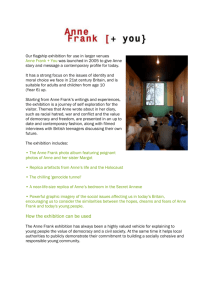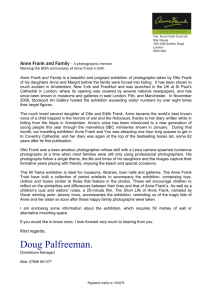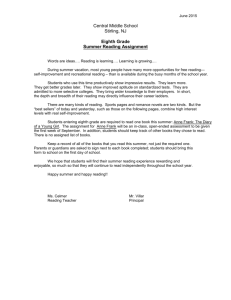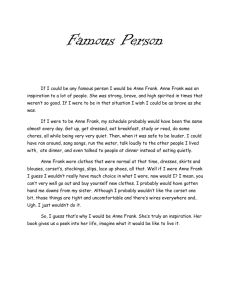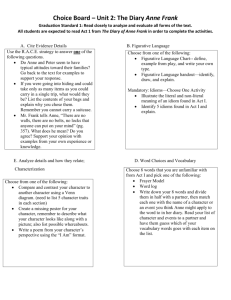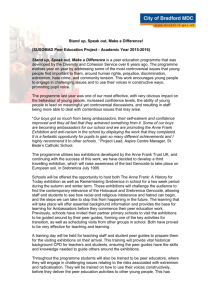View the backgrounder
advertisement
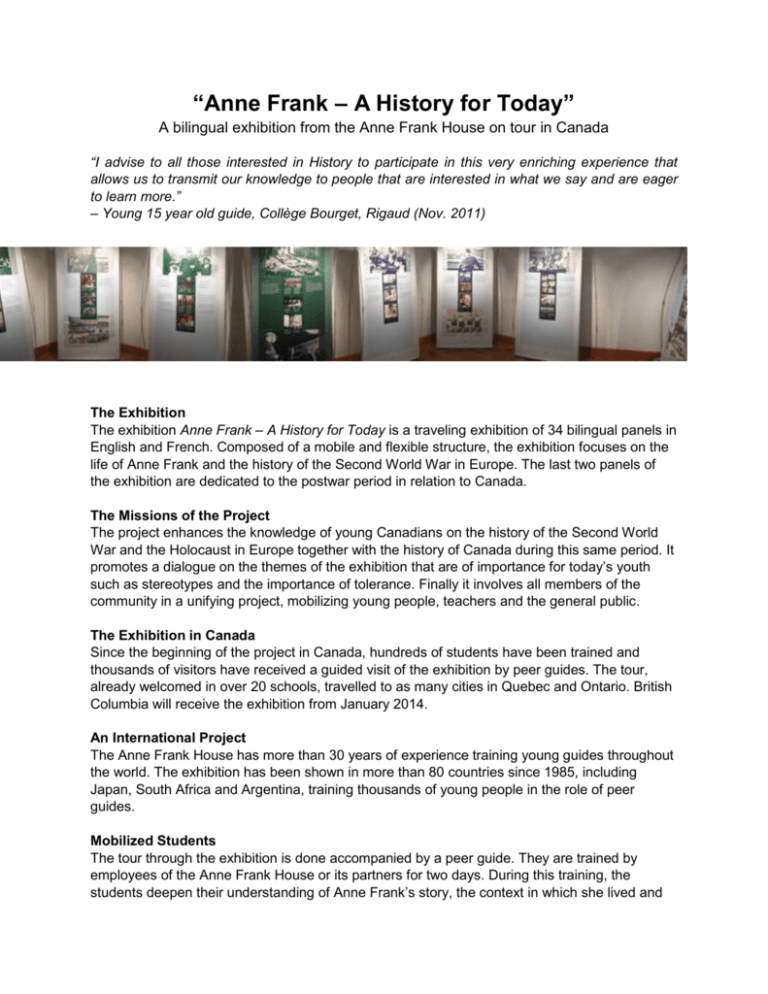
“Anne Frank – A History for Today” A bilingual exhibition from the Anne Frank House on tour in Canada “I advise to all those interested in History to participate in this very enriching experience that allows us to transmit our knowledge to people that are interested in what we say and are eager to learn more.” – Young 15 year old guide, Collège Bourget, Rigaud (Nov. 2011) The Exhibition The exhibition Anne Frank – A History for Today is a traveling exhibition of 34 bilingual panels in English and French. Composed of a mobile and flexible structure, the exhibition focuses on the life of Anne Frank and the history of the Second World War in Europe. The last two panels of the exhibition are dedicated to the postwar period in relation to Canada. The Missions of the Project The project enhances the knowledge of young Canadians on the history of the Second World War and the Holocaust in Europe together with the history of Canada during this same period. It promotes a dialogue on the themes of the exhibition that are of importance for today’s youth such as stereotypes and the importance of tolerance. Finally it involves all members of the community in a unifying project, mobilizing young people, teachers and the general public. The Exhibition in Canada Since the beginning of the project in Canada, hundreds of students have been trained and thousands of visitors have received a guided visit of the exhibition by peer guides. The tour, already welcomed in over 20 schools, travelled to as many cities in Quebec and Ontario. British Columbia will receive the exhibition from January 2014. An International Project The Anne Frank House has more than 30 years of experience training young guides throughout the world. The exhibition has been shown in more than 80 countries since 1985, including Japan, South Africa and Argentina, training thousands of young people in the role of peer guides. Mobilized Students The tour through the exhibition is done accompanied by a peer guide. They are trained by employees of the Anne Frank House or its partners for two days. During this training, the students deepen their understanding of Anne Frank’s story, the context in which she lived and the themes of her story that are still relevant today. They are then responsible for guiding their peers and members of their community through the exhibition for the duration of the project. A Multidisciplinary Project The story of Anne Frank can be studied in literature or in history and the propaganda in art. The projects relating to the exhibition are innumerable. Here are some examples: messages of peace and hope pinned on a tree, presentation of Amnesty International or a Handicap International youth booth to raise awareness, a conference with a Holocaust survivor or a World War II veteran, an artistic creation, writing a diary and a theatrical play. A Local Touch To make this story more relevant to young Canadians, links are provided with the history of Canada. An Internet site (Anne Frank Guide) offers comprehensive information on the history of Canada during the Second World War: How many Jewish refugees immigrated to Canada during the war? What were the impacts of war on the Italian and Asian immigrant residents in Canada and what role did Canadian soldiers play in Europe? Local panels with particular attention to a subject of interest in the community could be created and displayed. Other Educational Activities The Anne Frank House has demonstrated experience in activities requiring active participation of young people. The Free2Choose program engages young people in a debate on a situation from a film clip presenting a dilemma where human rights enter into conflict with each other. The Free2Choose-Create program offers young people the opportunity to create the film clip themselves. Finally, the Memory Walk program invites young people to create a short film about a commemorative memorial in the community, explaining the importance of remembrance. “A special thank you to each and every one of your guides. They testified passionately about the life of Anne Frank. Everyone was able to add their personal touch and it moved us. They were extraordinary ‘smugglers of memory’.” They were able to speak to students with confidence, skill, energy and passion. They wrote in their own way a page of history for our students by making Anne Frank accessible.” -Teacher of a class guided by a peer guide. For more information about the traveling exhibition you can visit the following page: http://www.annefrank.org/en/Education/Travelling-exhibition/ For more information about the projects in Canada, please contact Julie Couture:j.couture@annefrank.nl

